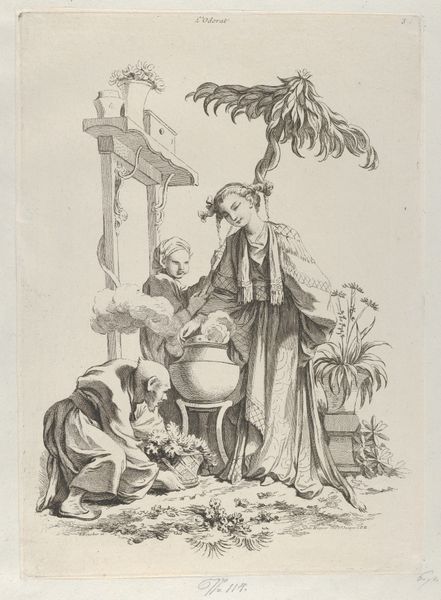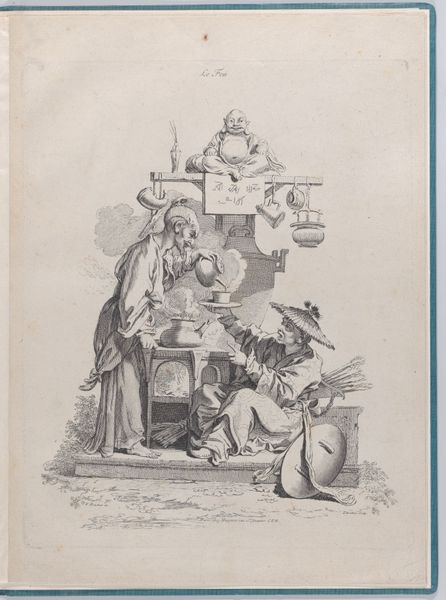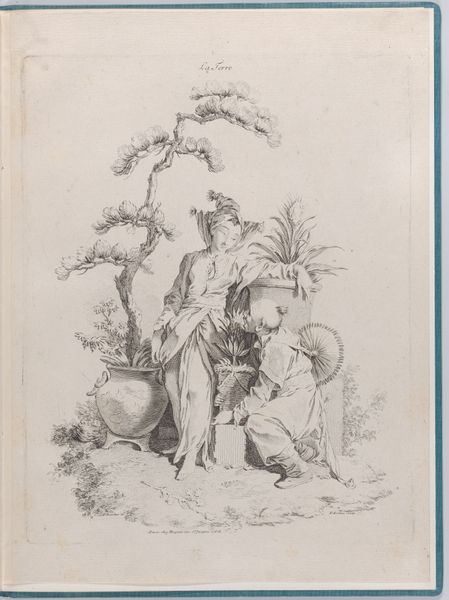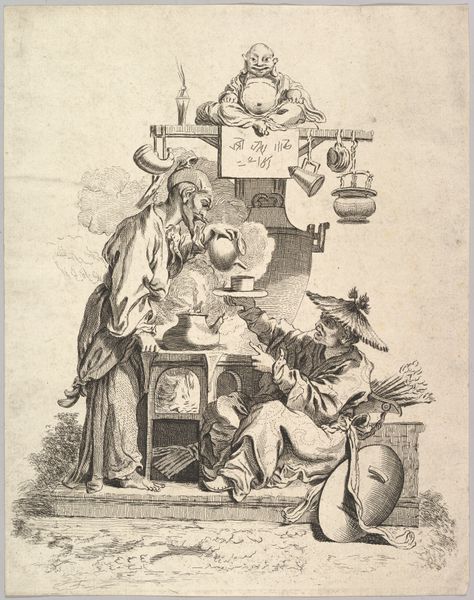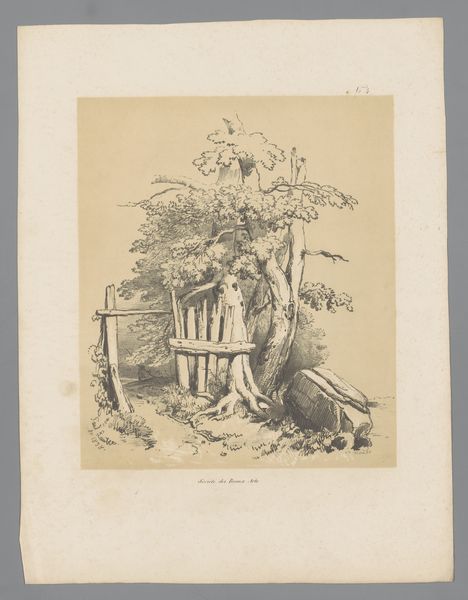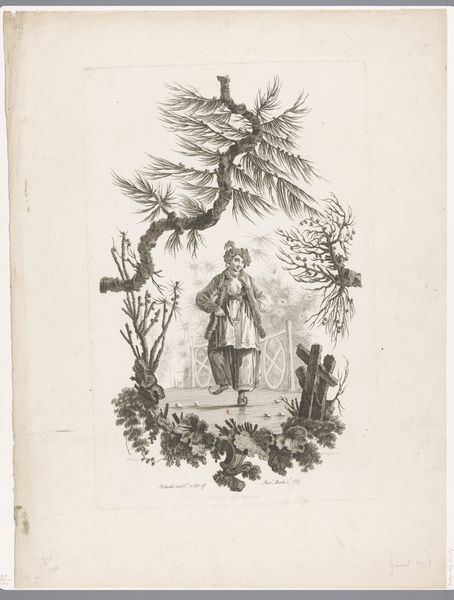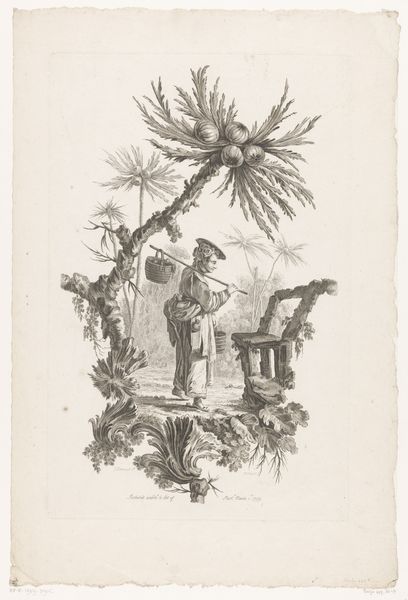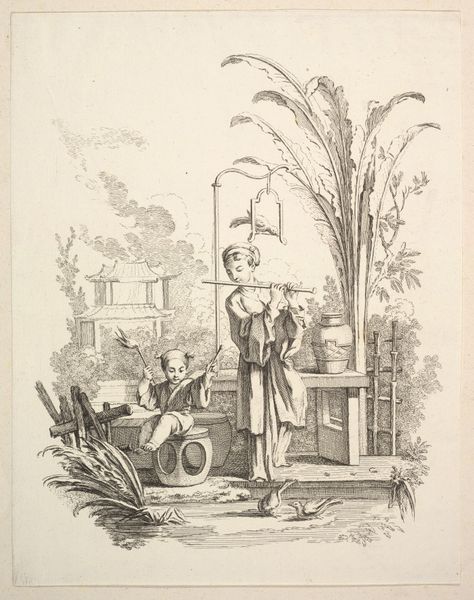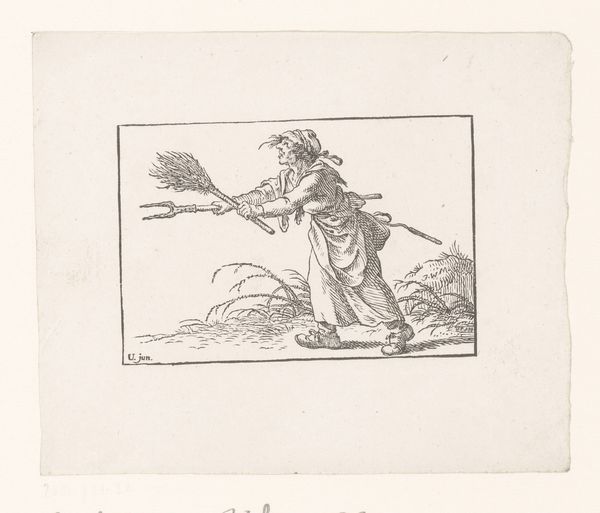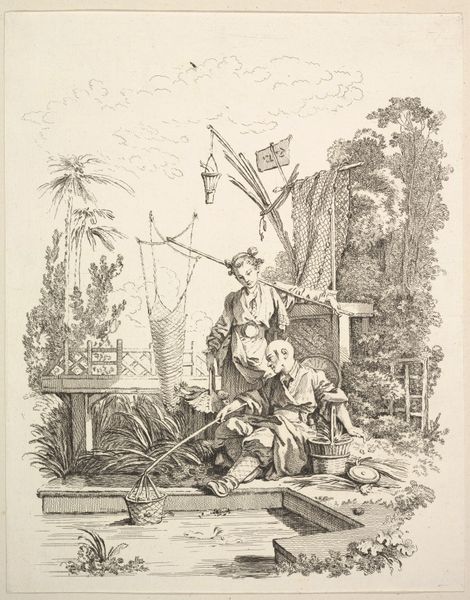
drawing, print, etching, engraving
#
drawing
#
allegory
#
baroque
# print
#
etching
#
coloured pencil
#
genre-painting
#
engraving
Dimensions: 15 15/16 × 11 13/16 × 3/16 in. (40.5 × 30 × 0.4 cm)
Copyright: Public Domain
Curator: We are looking at Pierre Aveline’s print, "The Four Elements," made between 1738 and 1749. Currently, it resides here at the Metropolitan Museum of Art. What strikes you first? Editor: It’s quite charming. Delicate. Almost like a porcelain figurine come to life. The bird imagery makes the association to the air very evident. Curator: It's important to consider the context of its creation. Aveline worked in a period where printmaking was developing into a critical medium for disseminating ideas and representations of the world, and we see this Chinoiserie style becoming wildly popular among European audiences. Editor: Ah, Chinoiserie. That Western appropriation and fantasy of East Asian aesthetics. But look how this style extends to representing the natural world. There’s an element of control here. The bird is caged; nature is ornamental, almost submissive. This reflects a European desire to classify and possess, not just physical objects, but knowledge itself. Curator: That's certainly part of the story. The allegory of the four elements was a familiar theme in European art, providing opportunities to display knowledge and also to display artistic virtuosity through composition and the refinement of technique. Prints such as this were reproduced in books, as illustrations of literary material, for instance, so the audience for these kinds of allegories would have understood and appreciated the details of the narrative depicted here. Editor: And I wonder, considering the proliferation of this type of imagery in Europe at this time, whether the consumption of it had real effects, feeding certain stereotypes and even helping shape and normalize colonial enterprises in the East. Curator: It definitely brings to the foreground those discussions of art and its complicity with power. Well, this print offers plenty of insights into artistic trends, but also into the more profound societal tensions. Editor: Agreed. It prompts critical examination of our perceptions and their histories, something museums should continuously encourage.
Comments
No comments
Be the first to comment and join the conversation on the ultimate creative platform.
